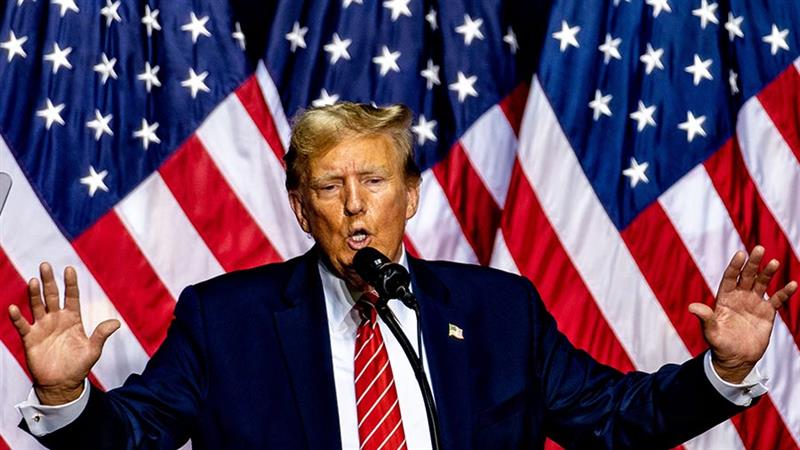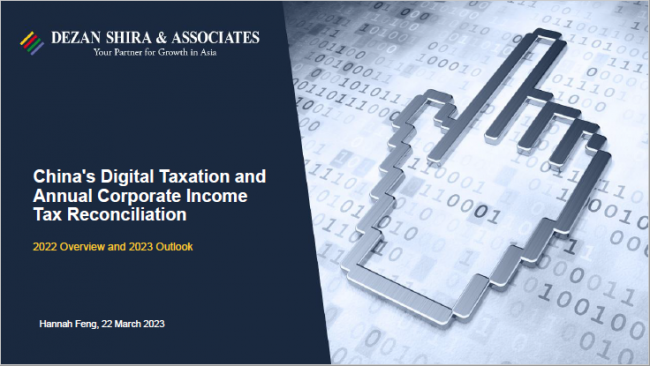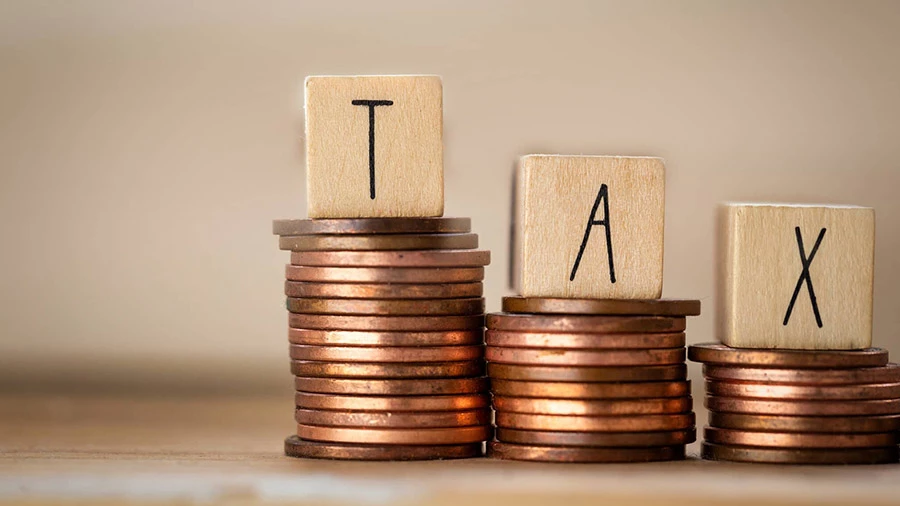China has established its strategic position in the world, in part due to its signing of numerous and advantageous free trade agreements. The duty and tax reductions provided by FTAs, has helped enable China’s rise as the leading world manufacturing hub in recent decades.
What are trade groupings?
Trade groupings are alliances or associations of countries that come together to enhance economic cooperation and increase trade by reducing barriers such as tariffs, quotas, and regulatory differences. These groupings can take various forms depending on the level of integration, including:
- Free trade areas: Where member countries eliminate tariffs and other trade barriers on goods traded among themselves while maintaining individual trade policies with non-member countries.
- Customs unions: In addition to removing internal trade barriers, members adopt a common external tariff on imports from non-members.
- Common markets: These allow not only free trade but also the free movement of factors of production like labor and capital among member countries.
- Economic unions: Beyond a common market, economic unions involve harmonized economic policies, regulatory standards, and often coordinated fiscal policies.
By collaborating through these trade groupings, countries can create larger markets, attract more foreign investment, achieve economies of scale, and improve their global competitiveness. For instance, regional groupings like ASEAN or RCEP help facilitate smoother trade relations among member states and serve as platforms for negotiating better trade deals with external partners.
What are free trade agreements?
A Free Trade Agreement (FTAs) is a type of agreement utilized by two or more countries in order to agree on the terms of trade between them. Such agreements determine the value of tariffs and duties that countries impose on imports and exports.
List Free Trade Agreements
In total, China has signed off 23 FTAs, which involve a total of 30 countries and regional blocs (including ASEAN, comprising 10 nations). A further 10 FTAs are currently under negotiation, while 8 more are under consideration.
|
FTA/Agreement Name |
Countries/Regions Involved |
Status |
|
China-Belarus Service and Investment Agreement |
Belarus |
Signed |
|
China-Serbia FTA |
Serbia |
Signed |
|
China-Ecuador FTA |
Ecuador |
Signed |
|
China-Nicaragua FTA |
Nicaragua |
Signed |
|
RCEP (Regional Comprehensive Economic Partnership) |
ASEAN (10), China, Japan, South Korea, Australia, New Zealand |
Signed and effective |
|
China-Cambodia FTA |
Cambodia |
Signed and effective |
|
China-Mauritius FTA |
Mauritius |
Signed and effective |
|
China-Maldives FTA |
Maldives |
Signed |
|
China-Georgia FTA |
Georgia |
Signed and effective |
|
China-Australia FTA |
Australia |
Signed and effective |
|
China-Korea FTA |
South Korea |
Signed and effective |
|
China-Korea FTA (Second Phase) |
South Korea |
Negotiations (Upgrade) |
|
China-Switzerland FTA |
Switzerland |
Signed and effective |
|
China-Switzerland FTA (Upgrade) |
Switzerland |
Negotiations launched |
|
China-Iceland FTA |
Iceland |
Signed and effective |
|
China-Costa Rica FTA |
Costa Rica |
Signed and effective |
|
China-Peru FTA |
Peru |
Signed and effective |
|
China-Peru FTA (Upgrade) |
Peru |
Negotiations launched |
|
China-Singapore FTA |
Singapore |
Signed and effective |
|
China-Singapore FTA (Upgrade) |
Singapore |
Signed and effective |
|
China-New Zealand FTA |
New Zealand |
Signed and effective |
|
China-New Zealand FTA (Upgrade) |
New Zealand |
Signed and effective |
|
China-Chile FTA |
Chile |
Signed and effective |
|
China-Chile FTA (Upgrade) |
Chile |
Signed and effective |
|
China-Pakistan FTA |
Pakistan |
Signed and effective |
|
China-Pakistan FTA (Second Phase) |
Pakistan |
Signed and effective |
|
China-ASEAN FTA |
Brunei, Cambodia, Indonesia, Laos, Malaysia, Myanmar, Philippines, Singapore, Thailand, Vietnam |
Signed and effective |
|
China-ASEAN FTA (Upgrade) |
ASEAN (10) |
Signed and effective |
|
China-Honduras FTA |
Honduras |
Negotiations launched |
|
China-GCC FTA |
Gulf Cooperation Council (Bahrain, Kuwait, Oman, Qatar, Saudi Arabia, UAE) |
Negotiations launched |
|
China-Israel FTA |
Israel |
Negotiations launched |
|
China–Japan–South Korea FTA |
Japan, South Korea |
Negotiations launched |
|
China-Moldova FTA |
Moldova |
Negotiations launched |
|
China-Norway FTA |
Norway |
Negotiations launched |
|
China-Panama FTA |
Panama |
Negotiations launched |
|
China-Palestine FTA |
Palestine |
Negotiations launched |
|
China-Sri Lanka FTA |
Sri Lanka |
Negotiations launched |
|
Mainland and Hong Kong CEPA |
Hong Kong SAR |
Signed and effective |
|
Mainland and Macao CEPA |
Macao SAR |
Signed and effective |
|
China-Taiwan ECFA |
Taiwan |
Signed (partly suspended since 2023) |
|
China-Colombia FTA |
Colombia |
Joint Feasibility Study |
|
China-Fiji FTA |
Fiji |
Joint Feasibility Study |
|
China-Nepal FTA |
Nepal |
Joint Feasibility Study |
|
China-Papua New Guinea FTA |
Papua New Guinea |
Joint Feasibility Study |
|
China-Canada FTA |
Canada |
Joint Feasibility Study |
|
China-Bangladesh FTA |
Bangladesh |
Joint Feasibility Study |
|
China-Mongolia FTA |
Mongolia |
Joint Feasibility Study |
|
Asia-Pacific Trade Agreement (APTA) |
Multiple Asia-Pacific nations |
Preferential Trade Agreement |
China’s major Free Trade Agreements
Here we discuss the advantages of China’s major free trade agreements.
RCEP
The Regional Comprehensive Economic Partnership, signed by 15 Asia-Pacific countries – China, Japan, South Korea, New Zealand, Australia, and the 10 Association of Southeast Asian Nations (ASEAN) member states – is the world’s largest free trade agreement.
The primary aim of the RCEP is to establish a comprehensive economic partnership based on existing bilateral ASEAN agreements with its FTA partners in the region. It is guided by a uniform set of rules and standards, lowered trade barriers, streamlined processes, and improved market access.
RCEP will provide substantial new trade and investment opportunities within the participating countries, covering roughly 30 percent of the global GDP (US$26.2 trillion) and 30 percent of the world’s population to form Asia’s largest trade bloc to date.
China-ASEAN FTA
The China-ASEAN Free Trade Area (CAFTA), first established in 2010 and upgraded in 2015 (FTA 2.0), has been a foundational agreement underpinning China-ASEAN economic ties. As of October 2024, China and the 10 ASEAN member states have substantively concluded negotiations for CAFTA Version 3.0, as announced during the 27th ASEAN-China Summit in Vientiane, Laos.
This latest upgrade, Version 3.0, builds upon existing frameworks and the Regional Comprehensive Economic Partnership (RCEP) to further liberalize trade, expand cooperation, and modernize trade rules. It introduces comprehensive enhancements across nine key areas, including:
- Digital economy: Deepens cooperation in digital infrastructure, e-payments, cybersecurity, paperless trade, and personal data protection.
- Green economy: Establishes frameworks for collaboration in green investment, trade, and sustainability standards under the Global Development Initiative.
- Supply chain connectivity: Strengthens regional infrastructure, facilitates the free flow of essential goods and services, and enhances resilience to disruptions.
- Standards and conformity: Promotes mutual recognition of technical regulations and conformity assessments, especially in high-growth sectors such as new energy vehicles and electronics.
- Competition and consumer protection: Introduces dedicated mechanisms for cross-border consumer rights and fair competition enforcement, including in e-commerce and tourism.
- Trade facilitation and customs: Streamlines customs procedures, pre-shipment inspections, and enhances smart customs collaboration.
- Support for SMEs: Encourages inclusive development and cooperation targeting micro, small, and medium-sized enterprises.
- Sanitary and phytosanitary measures: Improves technical cooperation and information-sharing to enhance food and goods safety.
- Economic and technical cooperation: Expands capacity-building and development initiatives, especially for less developed ASEAN members.
China played a constructive and leading role throughout the negotiation process, proposing advanced areas of cooperation and supporting ASEAN member participation. The agreement demonstrates strong mutual commitment to deepening economic integration, sustainable growth, and shared prosperity.
The two sides are now working toward completing legal reviews and domestic procedures with the goal of signing the formal Version 3.0 upgrade protocol in 2025.
CEPA between mainland and Hong Kong/Macao
On October 9 and 10, 2024, Mainland China signed “Supplement II to the Agreement on Trade in Services under CEPA” with both Hong Kong and Macao. These updated protocols came into effect immediately upon signing and are set for full implementation on March 1, 2025.
Key Updates in the Revised Agreements:
- Lower Market Entry Barriers: The new protocols further reduce entry thresholds for Hong Kong and Macao service providers into the Mainland market, particularly in sectors where each SAR has competitive strengths.
- Removal of Operating Period Requirement: The previously mandatory three-year substantive business operation period in Hong Kong or Macao has been eliminated in most service sectors, making it easier for new and smaller service providers to qualify under CEPA.
- Legal and Arbitration Autonomy:
- Introduces the “Hong Kong-invested, Hong Kong Law” and “Hong Kong-invested, Hong Kong Arbitration” mechanisms.
- Qualified Hong Kong enterprises may now designate Hong Kong law as the applicable contract law and select Hong Kong as the arbitration venue, reinforcing legal certainty and dispute resolution flexibility.
Impact on Hong Kong:
- Deeper Economic Integration: The revised agreement strengthens Hong Kong’s position within the national economic landscape, enhancing cross-border cooperation and accelerating market access.
- Support for High-Quality Growth: These updates reflect continued central government support for Hong Kong’s development, providing new momentum for its services-driven economy, and fostering greater alignment with China’s overall development strategies.
Impact on Macao:
- Facilitated Access in Key Sectors: The revised protocol reduces entry thresholds for Macao service providers, especially in healthcare, finance, scientific innovation, and tourism, areas central to Macao's long-term development.
- Greater Bay Area Cooperation: Several liberalization measures will first be implemented in the Guangdong-Hong Kong-Macao Greater Bay Area, accelerating Macao’s regional economic cooperation and integration.
The CEPA framework continues to offer foreign enterprises a pathway into restricted Mainland industries by acquiring qualified Hong Kong or Macao businesses. Through the latest updates, CEPA remains a crucial institutional bridge promoting open, inclusive, and rules-based trade and investment between the Mainland and its SARs, now with enhanced flexibility, faster qualification, and expanded legal protections.
China-Singapore FTA
The China-Singapore Free Trade Agreement (FTA), originally signed in 2008, marked China’s first comprehensive bilateral FTA with an Asian country. Building on earlier upgrades in 2011 and 2018, a new protocol came into force on December 31, 2024, bringing substantial enhancements to trade, investment, and emerging areas of cooperation. This milestone comes as China and Singapore commemorate the 35th anniversary of diplomatic relations in 2025.
Key Highlights of the 2024 Protocol Upgrade:
- Moving away from the earlier positive list approach, the FTA now adopts a negative list system for services and investment. This means that Singaporean and Chinese businesses are allowed to operate in all sectors not expressly restricted, ensuring national treatment and removing barriers not listed in the negative list.
- Broader market access:
- Singapore has lifted equity and professional control restrictions in key sectors, including manufacturing, construction, engineering, environmental protection, and maritime transport.
- China has pledged zero restrictions on manufacturing and expanded liberalization in sectors such as freight transport, onshore oil services, and healthcare, offering unprecedented openness.
- Both parties commit that any new liberalizing measures will automatically become binding commitments under the agreement. Conversely, they cannot roll back existing openness, providing long-term certainty and predictability for investors and service providers.
- The Negative List includes all restrictive measures, reducing regulatory ambiguity. This benefits businesses unfamiliar with the counterpart’s regulatory framework and improves the overall ease of doing business in both countries.
- Expansion into emerging sectors:
- A new chapter on telecommunications ensures non-discriminatory access to spectrum, numbering, interconnection, and other telecom infrastructure.
- The protocol strengthens cooperation in digital economy areas, including:
- E-payments
- Digital identity systems
- Data flow and governance
- “Single window” trade facilitation
- Smart city innovation
Strategic significance for Singaporean stakeholders:
- With the negative list model, all sectors are presumed open unless explicitly restricted—greatly simplifying market entry strategies.
- The addition of the ratchet clause and detailed telecom rules ensures Singaporean companies can operate in stable, transparent, and non-discriminatory environments.
- China now permits 100 percent foreign ownership in 22 key sectors for Singaporean investors, including construction, engineering, retail, and urban planning.
China-Republic of Korea (ROK) FTA
The China-ROK FTA aims to further expand bilateral trade and two-way investment, improve trade facilitation levels, and increase the predictability and transparency of two-way investment. It also strives to promote free flow of goods, capital, and personnel between China and ROK, and create an easier, opener, and fairer trade and investment environment.
Bilateral Investment agreements (BITs)
China currently has approximately 107 to 110 BITs in force, including agreements with countries and regions such as Austria, the Belgium-Luxembourg Economic Union, Canada, France, Germany, Italy, Japan, South Korea, Spain, Thailand, and the United Kingdom. Several new BITs have come into force recently, including with Angola (effective mid-2024) and Venezuela (effective January 2025), reflecting ongoing updates to China’s BIT network. Additionally, around 17 BITs are currently under negotiation or signed but not yet in force.
BITs are treaties signed between two countries or regions that establish terms and regulations for private investors operating in the partner country. These agreements aim to promote and facilitate bilateral foreign investment by protecting foreign investors from unfair treatment in the host country, ensuring they enjoy the same rights as domestic investors for the scope of investments detailed in the agreement.
|
No. |
Partner Country |
Status |
Date of Signature |
Date of Entry into Force |
|
1 |
Venezuela, Bolivarian Republic of |
In force |
15/11/2024 |
14/01/2025 |
|
2 |
Angola |
In force |
06/12/2023 |
29/06/2024 |
|
3 |
Türkiye |
In force |
29/07/2015 |
11/11/2020 |
|
4 |
Tanzania, United Republic of |
In force |
24/03/2013 |
17/04/2014 |
|
5 |
Canada |
In force |
09/09/2012 |
01/10/2014 |
|
6 |
Congo, Democratic Republic of the |
In force |
11/08/2011 |
17/11/2016 |
|
7 |
Uzbekistan |
In force |
19/04/2011 |
30/12/2011 |
|
8 |
Malta |
In force |
22/02/2009 |
01/04/2009 |
|
9 |
Mali |
In force |
12/02/2009 |
16/07/2009 |
|
10 |
Switzerland |
In force |
27/01/2009 |
13/04/2010 |
|
11 |
Colombia |
In force |
22/11/2008 |
02/07/2013 |
|
12 |
Mexico |
In force |
11/07/2008 |
06/06/2009 |
|
13 |
France |
In force |
26/11/2007 |
20/08/2010 |
|
14 |
Costa Rica |
In force |
24/10/2007 |
20/10/2016 |
|
15 |
Korea, Republic of |
In force |
07/09/2007 |
01/12/2007 |
|
16 |
Russian Federation |
In force |
09/11/2006 |
01/05/2009 |
|
17 |
Portugal |
In force |
10/12/2005 |
26/07/2008 |
|
18 |
Czechia |
In force |
08/12/2005 |
01/09/2006 |
|
19 |
Madagascar |
In force |
21/11/2005 |
01/07/2007 |
|
20 |
Spain |
In force |
14/11/2005 |
01/07/2008 |
|
21 |
Equatorial Guinea |
In force |
20/10/2005 |
15/11/2006 |
|
22 |
BLEU (Belgium-Luxembourg Economic Union) |
In force |
06/06/2005 |
01/12/2009 |
|
23 |
Korea, Dem. People's Rep. of |
In force |
22/03/2005 |
01/10/2005 |
|
24 |
Finland |
In force |
15/11/2004 |
15/11/2006 |
|
25 |
Tunisia |
In force |
21/06/2004 |
01/07/2006 |
|
26 |
Latvia |
In force |
15/04/2004 |
01/02/2006 |
|
27 |
Germany |
In force |
01/12/2003 |
11/11/2005 |
|
28 |
Guyana |
In force |
27/03/2003 |
26/10/2004 |
|
29 |
Trinidad and Tobago |
In force |
22/07/2002 |
07/12/2004 |
|
30 |
Bosnia and Herzegovina |
In force |
26/06/2002 |
01/01/2005 |
|
31 |
Myanmar |
In force |
12/12/2001 |
21/05/2002 |
|
32 |
Netherlands |
In force |
26/11/2001 |
01/08/2004 |
|
33 |
Nigeria |
In force |
27/08/2001 |
18/02/2010 |
|
34 |
Mozambique |
In force |
10/07/2001 |
26/02/2002 |
|
35 |
Cyprus |
In force |
15/01/2001 |
29/04/2002 |
|
36 |
Iran, Islamic Republic of |
In force |
22/06/2000 |
01/07/2005 |
|
37 |
Congo |
In force |
20/03/2000 |
01/07/2015 |
|
38 |
Bahrain |
In force |
17/06/1999 |
27/04/2000 |
|
39 |
Qatar |
In force |
09/04/1999 |
01/04/2000 |
|
40 |
Barbados |
In force |
20/07/1998 |
01/10/1999 |
|
41 |
Ethiopia |
In force |
11/05/1998 |
01/05/2000 |
|
42 |
Cabo Verde |
In force |
21/04/1998 |
01/01/2001 |
|
43 |
Yemen |
In force |
16/02/1998 |
10/04/2002 |
|
44 |
South Africa |
In force |
30/12/1997 |
01/04/1998 |
|
45 |
North Macedonia |
In force |
09/06/1997 |
01/11/1997 |
|
46 |
Sudan |
In force |
30/05/1997 |
01/11/1998 |
|
47 |
Cameroon |
In force |
10/05/1997 |
24/07/2014 |
|
48 |
Gabon |
In force |
09/05/1997 |
16/02/2009 |
|
49 |
Syrian Arab Republic |
In force |
09/12/1996 |
01/11/2001 |
|
50 |
Algeria |
In force |
17/10/1996 |
28/01/2003 |
|
Agreements not in force |
||||
|
— |
Tajikistan (2024 treaty) |
Signed (not in force) |
05/07/2024 |
|
|
— |
Libya |
Signed (not in force) |
04/08/2010 |
|
|
— |
Chad |
Signed (not in force) |
26/04/2010 |
|
|
— |
Bahamas |
Signed (not in force) |
04/09/2009 |
|
|
— |
Seychelles |
Signed (not in force) |
10/02/2007 |
|
|
— |
Vanuatu |
Signed (not in force) |
05/04/2006 |
|
|
— |
Guinea |
Signed (not in force) |
18/11/2005 |
|
|
— |
Namibia |
Signed (not in force) |
17/11/2005 |
|
|
— |
Uganda |
Signed (not in force) |
27/05/2004 |
|
|
— |
Benin |
Signed (not in force) |
18/02/2004 |
|
|
— |
Djibouti |
Signed (not in force) |
18/08/2003 |
|
|
— |
Côte d'Ivoire |
Signed (not in force) |
30/09/2002 |
|
|
— |
Jordan |
Signed (not in force) |
15/11/2001 |
|
|
— |
Kenya |
Signed (not in force) |
16/07/2001 |
|
|
— |
Sierra Leone |
Signed (not in force) |
16/05/2001 |
|
|
— |
Brunei Darussalam |
Signed (not in force) |
17/11/2000 |
|
|
— |
Botswana |
Signed (not in force) |
12/06/2000 |
|
|
Notes:
This update is based on the latest UNCTAD data and official treaty records as of early 2025. |
||||
Double Tax Avoidance agreements (DTAs)
Double Tax Avoidance Agreements treaties effectively eliminate double taxation by identifying exemptions or reducing the amount of taxes payable in China.
Global investors often find themselves in an unfavorable position of having to face being double taxed – taxed by two different countries on the same income – unless there is a double tax avoidance agreement in place. For example, a company might be subject to taxes in its country of residence and also in the countries where it raises income through foreign investments for the provision of goods and services.
It is therefore extremely worthwhile for foreign investors to be aware of which double taxation avoidance agreements (DTAs) between China and other countries might be applicable to their situation, as well as understand how these agreements are applied.
As of 2024, China has signed DTAs with 114 countries or regions.

























